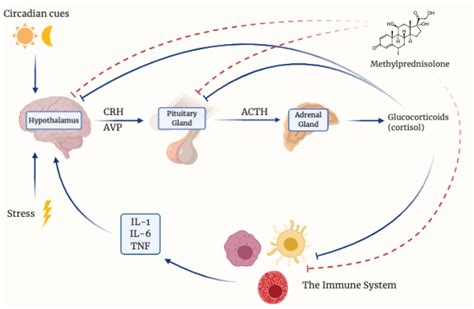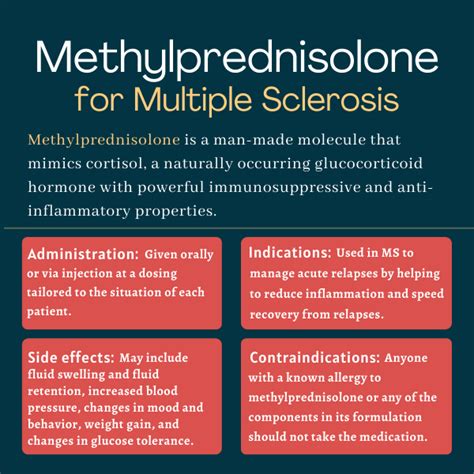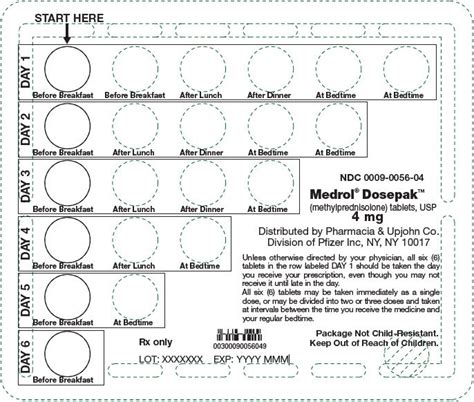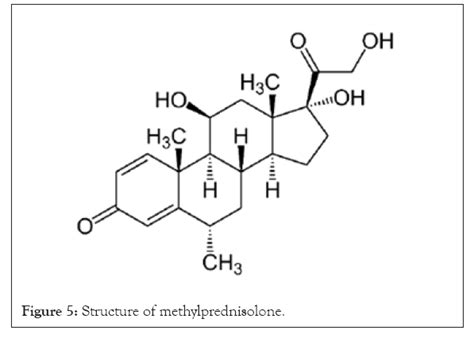Intro
Methylprednisolone works quickly to reduce inflammation, alleviating symptoms of conditions like arthritis, asthma, and allergies, with rapid relief from corticosteroid medication.
Methylprednisolone is a synthetic corticosteroid that has been widely used for its potent anti-inflammatory and immunosuppressive properties. It is commonly prescribed to treat a variety of conditions, including severe allergic reactions, asthma, and certain types of arthritis. One of the key benefits of methylprednisolone is its ability to work quickly, providing rapid relief from symptoms and improving quality of life for patients.
The rapid onset of action of methylprednisolone can be attributed to its ability to easily cross cell membranes and bind to specific receptors in the body. This binding process triggers a cascade of events that ultimately lead to the suppression of inflammation and the modulation of the immune response. As a result, patients who take methylprednisolone can often experience significant improvements in their symptoms within a matter of hours or days, rather than weeks or months.
The importance of rapid relief from symptoms cannot be overstated, particularly for patients who are experiencing severe or debilitating conditions. For example, individuals with acute asthma attacks or severe allergic reactions require immediate treatment to prevent serious complications, such as respiratory failure or anaphylaxis. In these situations, the quick action of methylprednisolone can be a lifesaver, providing rapid relief from symptoms and helping to prevent long-term damage to the body.
Methylprednisolone Mechanism of Action

Methylprednisolone works by binding to specific receptors in the body, including glucocorticoid receptors and mineralocorticoid receptors. This binding process triggers a cascade of events that ultimately lead to the suppression of inflammation and the modulation of the immune response. The exact mechanisms of action of methylprednisolone are complex and involve multiple cellular pathways, but the end result is a significant reduction in inflammation and immune activity.
One of the key ways in which methylprednisolone exerts its effects is by inhibiting the production of pro-inflammatory cytokines, such as tumor necrosis factor-alpha (TNF-alpha) and interleukin-1 beta (IL-1 beta). These cytokines play a crucial role in the development and maintenance of inflammation, and their inhibition can lead to a significant reduction in symptoms. Additionally, methylprednisolone can also induce the production of anti-inflammatory cytokines, such as interleukin-10 (IL-10), which can help to further reduce inflammation and promote healing.
Benefits of Methylprednisolone
The benefits of methylprednisolone are numerous and well-documented. Some of the most significant advantages of this medication include:- Rapid relief from symptoms: Methylprednisolone can provide quick and effective relief from symptoms, making it an ideal treatment option for patients with severe or debilitating conditions.
- Anti-inflammatory effects: The medication has potent anti-inflammatory properties, which can help to reduce swelling, pain, and redness associated with inflammation.
- Immunosuppressive effects: Methylprednisolone can help to modulate the immune response, reducing the risk of autoimmune disorders and other immune-related conditions.
- Versatility: The medication can be used to treat a wide range of conditions, including asthma, arthritis, and severe allergic reactions.
Methylprednisolone Uses

Methylprednisolone is a versatile medication that can be used to treat a variety of conditions. Some of the most common uses of the medication include:
- Asthma: Methylprednisolone can be used to treat acute asthma attacks and to help manage chronic asthma symptoms.
- Arthritis: The medication can be used to treat various types of arthritis, including rheumatoid arthritis, osteoarthritis, and psoriatic arthritis.
- Severe allergic reactions: Methylprednisolone can be used to treat severe allergic reactions, including anaphylaxis and angioedema.
- Skin conditions: The medication can be used to treat a variety of skin conditions, including eczema, psoriasis, and dermatitis.
Methylprednisolone Administration
Methylprednisolone can be administered via various routes, including oral, intravenous, and intramuscular. The choice of administration route will depend on the specific condition being treated and the severity of symptoms. Oral administration is the most common route, and the medication is typically taken in the form of tablets or capsules.Intravenous administration is often used in emergency situations, such as severe allergic reactions or acute asthma attacks. This route allows for rapid delivery of the medication and can provide quick relief from symptoms. Intramuscular administration is less common, but may be used in certain situations, such as for patients who have difficulty swallowing or absorbing oral medications.
Methylprednisolone Side Effects

Like all medications, methylprednisolone can cause side effects. Some of the most common side effects include:
- Weight gain: Methylprednisolone can cause weight gain, particularly in the face, neck, and trunk.
- Mood changes: The medication can cause mood changes, including anxiety, depression, and irritability.
- Insomnia: Methylprednisolone can cause insomnia and other sleep disturbances.
- Increased appetite: The medication can increase appetite, leading to weight gain and other metabolic changes.
Less common side effects of methylprednisolone include:
- Osteoporosis: Long-term use of the medication can lead to osteoporosis and an increased risk of fractures.
- Cataracts: Methylprednisolone can cause cataracts and other eye problems.
- Glaucoma: The medication can increase the risk of glaucoma and other eye conditions.
- Adrenal insufficiency: Long-term use of methylprednisolone can lead to adrenal insufficiency, a condition in which the adrenal glands do not produce enough hormones.
Methylprednisolone Interactions
Methylprednisolone can interact with a variety of other medications, including:- Blood thinners: Methylprednisolone can increase the risk of bleeding when taken with blood thinners, such as warfarin.
- Diabetes medications: The medication can affect blood sugar levels and interact with diabetes medications, such as metformin.
- Blood pressure medications: Methylprednisolone can interact with blood pressure medications, such as beta blockers and diuretics.
- Antidepressants: The medication can interact with antidepressants, such as selective serotonin reuptake inhibitors (SSRIs).
Methylprednisolone Dosage

The dosage of methylprednisolone will depend on the specific condition being treated and the severity of symptoms. The medication is typically taken in the form of tablets or capsules, and the dosage can range from 4-48 mg per day.
For acute conditions, such as severe allergic reactions or acute asthma attacks, the dosage may be higher, ranging from 40-120 mg per day. For chronic conditions, such as arthritis or asthma, the dosage may be lower, ranging from 4-20 mg per day.
It is essential to follow the dosage instructions provided by your doctor and to not exceed the recommended dose. Taking too much methylprednisolone can lead to serious side effects, including adrenal insufficiency and osteoporosis.
Methylprednisolone Precautions
Before taking methylprednisolone, it is essential to inform your doctor about any medical conditions you have, including:- Diabetes: Methylprednisolone can affect blood sugar levels and interact with diabetes medications.
- High blood pressure: The medication can increase blood pressure and interact with blood pressure medications.
- Osteoporosis: Long-term use of methylprednisolone can lead to osteoporosis and an increased risk of fractures.
- Glaucoma: The medication can increase the risk of glaucoma and other eye conditions.
Additionally, it is essential to inform your doctor about any medications you are taking, including:
- Blood thinners: Methylprednisolone can increase the risk of bleeding when taken with blood thinners.
- Diabetes medications: The medication can affect blood sugar levels and interact with diabetes medications.
- Blood pressure medications: Methylprednisolone can interact with blood pressure medications.
- Antidepressants: The medication can interact with antidepressants.
Methylprednisolone Conclusion and Future Directions

In conclusion, methylprednisolone is a versatile and effective medication that can be used to treat a variety of conditions. Its rapid onset of action, potent anti-inflammatory effects, and ability to modulate the immune response make it an ideal treatment option for patients with severe or debilitating conditions.
As research continues to evolve, it is likely that new uses for methylprednisolone will be discovered, and its potential benefits will be further explored. Additionally, the development of new formulations and administration routes may improve the safety and efficacy of the medication, making it an even more valuable treatment option for patients.
We invite you to share your thoughts and experiences with methylprednisolone in the comments section below. Have you or a loved one used this medication? What were your experiences? Do you have any questions or concerns about methylprednisolone? We would be happy to hear from you and provide any additional information or support.
What is methylprednisolone used for?
+Methylprednisolone is used to treat a variety of conditions, including asthma, arthritis, and severe allergic reactions. It is a synthetic corticosteroid that has potent anti-inflammatory and immunosuppressive properties.
How does methylprednisolone work?
+Methylprednisolone works by binding to specific receptors in the body, including glucocorticoid receptors and mineralocorticoid receptors. This binding process triggers a cascade of events that ultimately lead to the suppression of inflammation and the modulation of the immune response.
What are the common side effects of methylprednisolone?
+The common side effects of methylprednisolone include weight gain, mood changes, insomnia, and increased appetite. Less common side effects include osteoporosis, cataracts, glaucoma, and adrenal insufficiency.
Can methylprednisolone be used in combination with other medications?
+Yes, methylprednisolone can be used in combination with other medications. However, it is essential to inform your doctor about any medications you are taking, including blood thinners, diabetes medications, blood pressure medications, and antidepressants.
What is the recommended dosage of methylprednisolone?
+The recommended dosage of methylprednisolone will depend on the specific condition being treated and the severity of symptoms. The medication is typically taken in the form of tablets or capsules, and the dosage can range from 4-48 mg per day.
